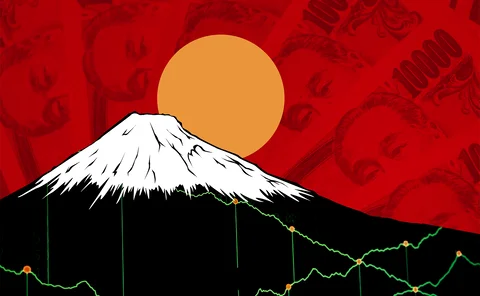Valuation adjustments (XVAs)
WHAT IS THIS? The XVAs are a family of adjustments that can be made to the price of a derivatives trade, reflecting counterparty risk (CVA), own-default risk (DVA), funding (FVA), capital (KVA) and margin (MVA). Their theoretical roots and practical implementation are still debated, but pragmatism also matters: banks that ignore XVAs are at risk of mispricing a trade; banks that include them are at risk of never winning a trade.
Functional programming reaches for stardom in finance
Fans highlight more reliable code, and suitability for complex tasks and distributed ledgers
triCalculate and Jon Gregory discuss the current state of play for XVA
An excerpt from a discussion between triCalculate's co-CEO, Martin Engblom, and XVA (valuation adjustment) expert Jon Gregory in which they discuss the current state of play for XVA. Our experts provide professional insight on topics such as credit…
Dawn of CVA threatens hedging woe for Japan banks
Japan’s thinly traded CDS market will make CVA hedging challenging, dealers say
CVA study highlights scale and causes of wrong-way risk
Researchers advise including correlations both with rate level and volatility in CVA calculations
Japan banks face huge CVA hit, dealers say
Revaluation of derivatives books likely to cause hundreds of millions in one-off losses
Technology vendor of the year: FIS Global
Risk Awards 2019: Software engineers respond to new challenges in traded risk
How banks can keep pace with XVA
The complexity of derivatives pricing has grown significantly in the past decade, with banks having to factor in a series of valuation adjustments to calculate the impact on their balance sheets. With budgets and resources under pressure, and traditional…
Risk Markets Technology Awards 2019: Vendors enter the pick-and-mix era
Modular tech and micro-services – plus new risk and regulatory needs – are creating openings for insurgents and incumbents
Quant of the year: Alexei Kondratyev
Risk Awards 2019: A glimpse of the future? Quant uses ML to model term structure and crunch margin costs
MVA: Forecasting initial margin for client trades and dynamic hedges
In its latest margin survey, the International Swaps and Derivatives Association reported that initial margin (IM) collected by the top 20 firms increased by 22% to $130.6 billion at the end of 2017. As new transactions become subject to IM requirements,…
Obstacles and opportunities in adopting cloud computing
Sponsored Q&A
Compliance preparations amid uncertain rules
A forum of industry leaders discusses how banks will define individual trading desks under FRTB, whether BCBS 239 compliance projects can help banks meet FRTB risk data challenges, which model validation obstacles banks still face and other key topics
Quant drought hits banks and funds in Asia
Limited pool of talent hindering expansion of sophisticated strategies across buy and sell side
Ibor transition valuation and risk management considerations
The impending move from interbank offered rates to alternate reference rates will require important changes to many valuation and risk management processes and infrastructure. EY Financial Services’ Shankar Mukherjee, Michael Sheptin and John Boyle…
RFR valuation challenges
A new system of interest rate benchmarks for all major currencies is emerging. These new benchmarks will replace interbank funding rates with risk-free rates (RFR). This article by LPA focuses on valuation challenges during the transitional period to new…
CVA gain bolsters JP Morgan trading revenues
$302 million of first half trading revenues attributed to credit valuation adjustment
Staying alive: the EU’s stubborn CVA exemption
Delayed Pillar 2 capital charge could help US banks take EU market share in corporate hedging
BAML replaces head of global rates
Gupta and Stanley named co-heads as Roberts exits
Swap spreads halve as dealers fight for corporate market share
US bank push, rate movements and evolving market practice driving spreads to “suicidal” levels
XVA swings boost US bank trading revenues
DVA change pares down dealers' derivative liabilities






















